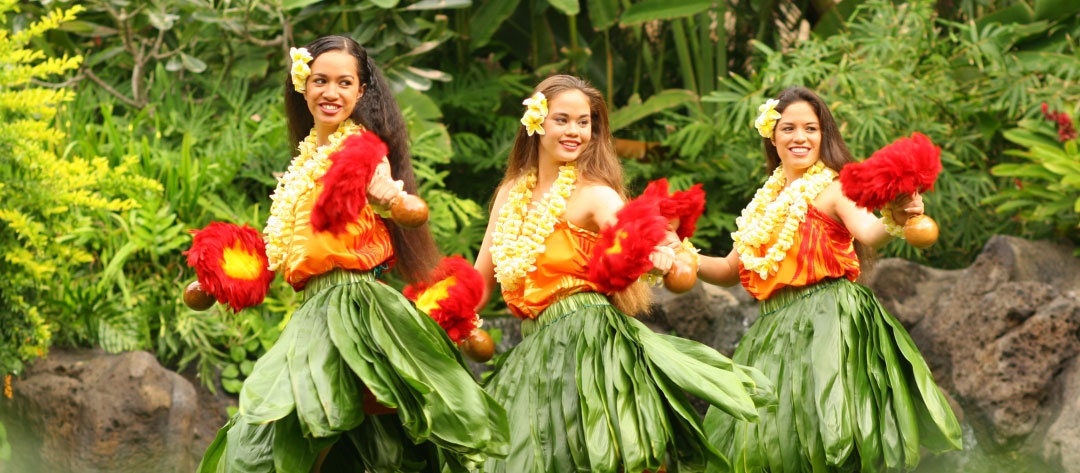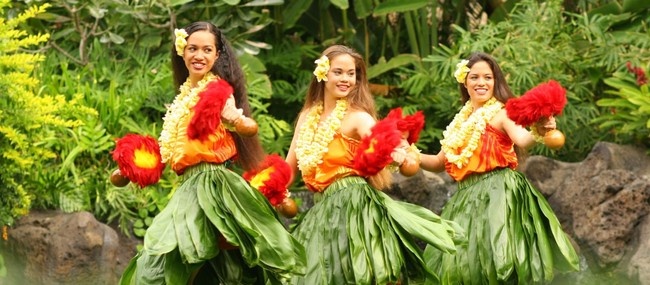
.BI9EyP8f_2sEdzM.webp)
Witnessing the Legacy: How Visitors Can Learn More
For the culturally curious visitor, the desire to learn more about kākau uhi is natural and commendable. While witnessing a ceremony or receiving a traditional tattoo is a rare privilege reserved for a select few, there are numerous respectful ways to deepen one's understanding and appreciation for this incredible art form.
Museums as Keepers of History
Bernice Pauahi Bishop Museum (Honolulu)
As the State Museum of Natural and Cultural History, the Bishop Museum is the premier institution for anyone seeking to understand the heritage of Hawaiʻi and the Pacific. While its powerful Tatau: Marks of Polynesia exhibition, which featured traditional tattooing implements from both Hawaiʻi and Sāmoa, has concluded, the museum's commitment to the subject is clear. Visitors can and should explore the museum's extensive online ethnology database. By searching for terms like "tattoo," "uhi," or "mōlī," one can view high-resolution images of historical tattooing implements from the museum's collection, offering a rare digital glimpse into the tools of the ancient kahuna.
Honolulu Museum of Art (HoMA)
HoMA has also played a role in contextualizing Hawaiian tattooing within the broader art world. Past exhibitions have connected contemporary tattoo work to its historical roots, showcasing 19th-century prints by artists like Jacques Arago that depict tattooed Hawaiians, as well as the Japanese woodblock prints (ukiyo-e) that have heavily influenced many modern tattoo styles in Hawaiʻi. A visit to HoMA can provide insight into the rich, cross-cultural artistic dialogue that defines the islands.
Learning Through Media
Documentaries
Several high-quality documentaries offer an intimate and respectful look into the world of kākau uhi. The most notable is Nā Loea: Ancestral Ink, a production of Hawaiʻi's ʻŌiwi TV that provides a beautiful and profound portrait of Suluape Keone Nunes and his work. The PBS special Skin Stories also features a segment on Hawaiʻi with interviews with Nunes and recipients of his work, placing kākau in the context of other Pacific tattoo traditions.
Academic Resources
For those seeking the deepest level of understanding, the libraries at the University of Hawaiʻi at Mānoa house a wealth of knowledge, including unpublished papers, master's theses, and annotated bibliographies dedicated specifically to the study of traditional Hawaiian tattooing.
The Etiquette of Observation: A Note on Photography and Videography
It's essential to address a critical gap in many guides: the etiquette of observing a ceremony. A kākau uhi ceremony is not a performance or a tourist attraction. It's a sacred, spiritual, and intensely personal rite of passage for the individual receiving the uhi. The cultural context implies a fundamental rule of respect: photography and videography are strictly prohibited unless one has been given explicit, personal permission from the practitioner and the recipient, a privilege almost never extended to outsiders.
The absence of a "No Photography" sign should not be mistaken for an invitation. The very act of asking to film or take pictures demonstrates a misunderstanding of the sacred nature of the event.
If you're ever so fortunate as to be invited to observe, the only appropriate course of action is to put away your phone and camera. The expectation is not for you to document, but to be fully present, to hold space with silent respect, and to witness the ceremony with your heart, not through a lens.
Your Hawaiian Adventure: Adrenaline and History
The journey into Hawaiian culture is multifaceted, weaving together ancient traditions, modern thrills, and pivotal moments in world history. While the path of kākau uhi is one of deep, internal exploration, the islands also offer adventures of a different, yet equally memorable, kind.
A Modern Counterpoint - Coral Crater Adventure Park
For those seeking an adrenaline rush, Coral Crater Adventure Park on Oʻahu offers a thrilling counterpoint to the quiet reverence of cultural study. Here, you can experience the island's dynamic landscape in a high-energy way, navigating rugged terrain on an ATV, soaring through the forest canopy on a zipline, or testing your courage on the towering Adventure Tower. It's a modern, exhilarating way to engage with the physical beauty of Hawaiʻi. For more information on their tours and activities, you can visit their website at coralcrater.com.
A Different Chapter of History - Pearl Harbor
Just as kākau tells the story of ancient Hawaiʻi, a visit to Pearl Harbor is essential for understanding a defining moment in modern history that unfolded on these shores. This solemn and powerful site honors the lives lost during the attack on December 7, 1941, and offers a profound reflection on peace and conflict. Visiting the USS Arizona Memorial and the other historic sites provides a crucial historical context to any trip to Oʻahu. To plan a visit and book official tours, see the official site at pearlharbor.org. Balancing deep cultural immersion with an understanding of Hawaiʻi's more recent history creates a truly comprehensive and meaningful experience of the islands.
An Indelible Mark
To receive an uhi is to accept an indelible mark, one that goes far deeper than the skin. It's a living story, a visible prayer, a permanent connection to the long line of ancestors who came before and the generations who will follow. The traditional Hawaiian tattoo isn't something one simply gets. It's something one becomes. It's a physical manifestation of an identity that's carried, honored, and lived every day.
The near extinction of kākau uhi serves as a stark reminder of the fragility of cultural traditions in the face of colonization and suppression. Yet, its powerful revival is an even greater testament to the enduring strength of the Hawaiian spirit. Thanks to the unwavering kuleana of individuals like Suluape Keone Nunes, and the dedicated students like Keliʻi Mākua and Kamaliʻikūpono Hanohano who now carry the torch, this sacred art form has been brought back from the brink. The rhythmic heartbeat of the ancestors is once again being heard across the islands, permanently etched into the soul of the skin.
Growing up here in Hanalei, I've had the privilege of witnessing this revival firsthand. The sound of the hahau tapping carries across our community gatherings, reminding us all of who we are and where we come from. Whether you're visiting our islands or simply learning about our culture from afar, I hope this story helps you understand that kākau uhi is more than art—it's the heartbeat of a people who refused to let their traditions die.
📖 Complete Guide
The sound of ancestors
History of Kākau UhiFrom light to shadow and back
The Sacred ProcessTraditional ceremony steps
Polynesian StylesHawaiian, Samoan, Māori
The Next GenerationCarrying the torch forward
Cultural RespectAppropriation vs appreciation
Current page
🎓 Learning Resources
Bishop Museum
Online ethnology database
Honolulu Museum of Art
Historical context exhibitions
Nā Loea: Ancestral Ink
ʻŌiwi TV documentary
UH Mānoa Libraries
Academic research
👁️ Observation Etiquette
- ✗ No photography or videography
- ✓ Silent, respectful presence
- ✓ Witness with your heart
- ✓ Be fully present
🏝️ Hawaiian Adventures
Coral Crater Adventure Park
ATVs, ziplines, adventure tower
coralcrater.com
Pearl Harbor
USS Arizona Memorial
pearlharbor.org
🌺 Final Reflection
Kākau uhi is more than art—it's the heartbeat of a people who refused to let their traditions die.
"The rhythmic heartbeat of the ancestors is once again being heard across the islands."
Glossary of Hawaiian Cultural Terms
ʻAumakua
A family or personal god, often in the form of an animal (like a shark or lizard), who acts as a guardian and protector. Designs can honor one's ʻaumakua.
Hahau
The mallet or tapping stick used to strike the mōlī, creating the rhythmic sound and driving the ink into the skin.
Haumāna
A student or apprentice. In the context of kākau, this is a lifelong relationship of learning and service.
Kākau
The traditional Hawaiian word for tattoo, literally meaning "to strike or to place upon," reflecting the hand-tapping method.
Kanaka (Maoli)
A Native Hawaiian person.
Kapu
The ancient system of sacred laws, taboos, and prohibitions that governed every aspect of Hawaiian life.
Kuleana
A uniquely Hawaiian concept signifying both a right and a profound responsibility. Receiving an uhi comes with the kuleana to honor one's ancestors and community.
Kumu
A teacher, source of knowledge, or master. Suluape Keone Nunes is a kumu to his apprentices.
Mana
Spiritual power, energy, and authority that can be inherited through lineage and imbued into people, places, and objects. Kākau is a way to receive and enhance mana.
Mōlī
The tattooing comb, the sharp implement traditionally made of bone (like albatross) or tusk, which holds the ink and pierces the skin.
Moʻokūʻauhau
Genealogy or ancestral lineage. The foundation of Hawaiian identity and a critical component in determining the design of a traditional uhi.
Noa
Common or not sacred. Used to describe tattoo patterns that are not restricted to specific lineages and are more accessible.
Paʻu
The traditional black ink used for kākau, made from the soot of burnt kukui nuts.
Pule
Prayer or spiritual incantation. An essential part of the kākau ceremony, used to prepare the tools, the practitioner, and the recipient.
Uhi
The tattoo itself; the markings on the skin. The word can also mean "to cover" or "a veil."


